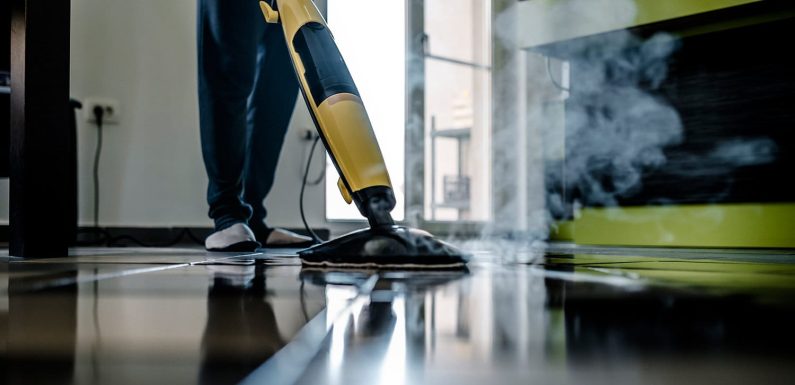
I have a new floor, and it’s sticky. Why is that? The answer to this question will depend on the type of sticky flooring you have, as well as the cause of it. But don’t worry–we’ll get into all that below!
Causes of Sticky Floor
- Too much humidity. If your home is humid, the flooring has too much moisture and may be sticky.
- Cleaner residue. If you have used a cleaner that leaves a sticky residue on the floor and then mopped over it, this could be why your feet are sticky.
- Newer flooring. Newer laminate or vinyl floors can often be very slippery when wet because of their manufacturer’s glues and adhesives used during manufacturing.
Newer floors are sticky
.The stickiness you’re feeling could be due to several things, including the age of your flooring. Newer floors are often more sticky, as they haven’t been cured for long. For example, laminate flooring has recently been applied to your home and will take some time to heal completely.
Another potential cause is protective sealers or cleaners on your flooring, and these can cause extra stickiness and a white residue that makes it seem like there’s a coating over everything. You’ll want to deep clean these products off with soap and water before you mop again so that you don’t end up with this problem again later down the line!
The flooring is too humid
.It’s not uncommon for your floors to feel sticky after you steam-mop. Your floor is likely too humid if you live in a humid climate. Humidity can make floors feel sticky and cause them to stick together when wet. The best way to combat this problem is by using a dehumidifier, which can help reduce the moisture in the air around your house. You can also use fans or open windows and doors to let fresh air into the room so that there are more dry surfaces on which water will evaporate from your floor instead of it.
Another possible reason your floors are sticky after mopping with a steam mop is that they are slightly damp before you mopped them (for example, if you’ve been doing laundry recently). In this case, run over these areas with some paper towels until they’re completely dry before cleaning up any messes left behind by dirt or stains on top of them!
The flooring has a sealer or cleaners on the cleaner floor has been sealed. This can also cause it to feel sticky when you mop. Sealer is a coat of protection applied to floors to prevent damage and stains. However, if the sealer is too heavy or misused, it can leave behind a residue on your flooring.
A professional can apply sealant if you are unsure how to do it yourself — or if hiring a professional seems too much work! You might also want someone who knows what they’re doing if anything goes wrong during application; sealing floors isn’t always as easy as pouring out some paint from a bucket (or spraying it from an aerosol).
If you plan on applying the sealant yourself, make sure that the instructions for use are followed exactly as written on whatever product you buy for this task (and don’t forget: stay away from any cleaning products while working with sealant!).
Prevention and Solution
- If you want to prevent your floors from being sticky, you can do a few things. The first step is to ensure that your home’s humidity level is as low as possible. You can do this by turning off humidifiers or dehumidifiers as needed and keeping windows closed when it’s cold outside, so that warm,m air doesn’t escape into the cold winter air outside.
- Once you have a good handle on preventing stickiness, it’s time to address any problems that have already occurred! To start fixing this problem, you’ll need to clean all of the floors with either a microfiber mop or some other cleaning tool (such as an old sock) that has been dipped into water with soap in it (you can also use vinegar if you don’t want anything too strong).
- After cleaning your floor with this method, they should be nice and shiny again! And since they were just cleaned up pretty well with soap/vinegar mixtures on them anyway…you might as well use those same products again for maintenance purposes every time after using them once before – repeat steps 2-4 above whenever there’s any visible residue left behind after mopping up surface areas where food may have spilled (like kitchen countertops).
Conclusion
So, what’s the solution? If you want to prevent sticky floors, make sure that you thoroughly clean your mop after each use. You also need to make sure that there are no cleaners or sealers on your flooring before using a steam mop on it.

